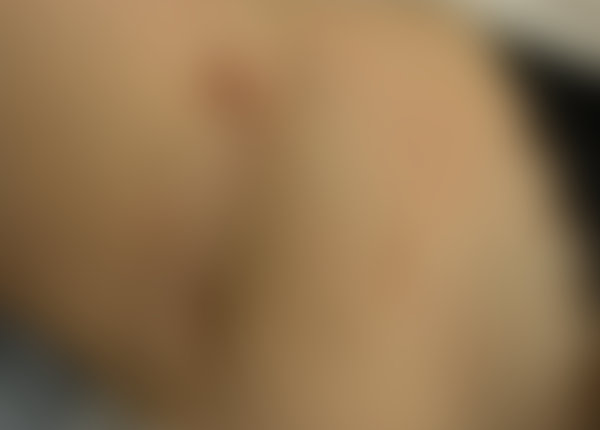
Learn more about hidradenitis suppurativa.
Read about available treatments.
Learn about your hidradenitis suppurativa.
Express what is important to you.
Compare treatments with your values.
Your results and next steps.
A patient decision aid (PDA) is a tool to help patients make informed health care decisions with their health care providers.
This patient decision aid is developed specifically for people with hidradenitis suppurativa (HS) in order to:
At the end of this PDA, you can bring a summary of your results to your health care provider to talk further about your treatment(s).
Hidradenitis suppurativa (HS), also called acne inversa or Verneuil’s disease, is a long-term skin condition and disorder of hair follicles (Zouboulis, et al., 2015). HS results in inflamed and swollen lumps that can be itchy, painful, and lead to discharge (Alikhan, 2016). They are usually found at areas of the body where skin rubs together, such as the armpits, buttocks, thighs, groin, and underneath the breasts (Alikhan, 2016). Other affected areas may include the ears, stomach, neck, and chest.
HS is not contagious. It is not due to poor hygiene nor is it caused by bacteria. However, secondary infections may arise in the HS affected area(s) (Deckers, van der Zee, & Prens, 2014).



Diagnosis of HS is based on clinical presentation. There are no specific lab tests for diagnosis.
While HS affects up to an estimated 4% of the European population (Zouboulis, et al., 2015), this number is lower in North America (Zouboulis, et al., 2015; Lee, Alhusayen, Lansang, Shear, & Yeung, 2017; Canadian Skin Patient Alliance, 2017; Lachaine, Miron, Shear, & Alhusayen, 2016; Garg, Kirby, Lavian, Lin, & Strunk, 2017).
People often develop HS during their early 20’s. However, HS can appear in children who have yet to reach puberty, although it is rare (Deckers & Prens, 2016).
HS is more common in African-Americans than in Caucasians (Shah, 2005) and in women than in men, with a female-to-male ratio of 3:1 (Garg, Kirby, Lavian, Lin, & Strunk, 2017). Additionally, HS is more commonly diagnosed in people who are in their 3rd and 4th decades of life (Garg, Kirby, Lavian, Lin, & Strunk, 2017), although a diagnosis can be made in postmenopausal women.
Although the exact cause of HS is currently unknown, possible causes include genetic, hormonal, microbiological, and environmental factors (Ingram, et al., 2015).
Some common risk factors that are associated with HS include:
The presence of conditions associated with HS can vary between individuals. Some of the most common include, but are not limited to (Shlyankevich, Chen, Kim, & Kimball, 2014; Kohorst, Kimball, & Davis, 2015):
Consider undergoing regular screening for these conditions. Talk to your health care provider for more information.
People with HS often experience a reduced quality of life physically, socially, and emotionally (Gooderham & Papp, 2015). This may be due to the presence of uncomfortable symptoms, such as:
You should see a health care provider who can inform you of the severity of your HS affected area(s) and help guide you through available treatment options. Learning about these treatments may help you to take control over your condition and:
It is also recommended that you take care of yourself by:
You are also encouraged to seek in-person and online HS support groups.
Pain is a frequent and often severe symptom of HS, as well as an important contributing factor to HS patients’ reduction in quality of life (Zouboulis, et al., 2015).
You should inform your health care provider and/or pain specialist what over-the-counter or alternative medicines you have tried, and discuss the different means/methods you have taken to reduce pain. Ask for their guidance before trying other treatments.
Pain treatments for HS can be divided into first and second-line treatments (Horváth, Janse, & Sibbald, 2015).
First-line treatments, which are to be tried first for pain resulting from HS, include (Horváth, Janse, & Sibbald, 2015; Scheinfeld, 2013):
If first-line treatments fail to relieve pain, you may wish to consult a pain specialist.
Second-line treatments, which are to be recommended by a health care provider and/or pain specialist when first-line treatments are ineffective, include (Horváth, Janse, & Sibbald, 2015; Scheinfeld, 2013):
There are two types of wound care in HS patients: day-to-day care of HS lesions and post-surgery care. The complete wound healing process in post surgical wounds varies based on the extent of the surgery, location, and HS patients’ general health. However, the time to complete healing can be shortened by adhering to a proper wound management regimen consisting of cleaning, treating, and bandaging, as well as taking antibiotics for secondary infections, should they occur (Wang, Wang, Sibbald, Alhusayen, Bashash, & Alavi, 2015). Additionally, the use of gentle cleansers can minimize the risk of developing irritant or allergic reactions (Wang, Wang, Alavi, Alhusayen, Bashash, & Sibbald, 2015).
Optimal wound care management strategies should ultimately be personalized to the type and depth of the wound(s), cost of wound care relative to affordability, ease of application, absorbency, and management of odor. Talk to you health care provider and/or wound specialist regarding all methods used to treat wounds, including both typical and post surgical HS wounds.
Warm compresses and baths may be used to clean minor wounds (i.e. early single lesions, no abscesses, minimal pain) and provide relief (Shah, 2005).
Negative pressure wound therapy (NPWT), which uses a vacuum-assisted closure device, may help drain and seal open, large, and infected wounds resulting from surgical excisions (Alavi & Kirsner, 2015; Dini, Oranges, Rotella, & Romanelli, 2015).
Support from a health care provider should be sought when dealing with moderate wounds (i.e. multiple recurrent lesions, abscesses with discharge, and/or moderate pain) and actively draining lesions (Shah, 2005).
The choice of dressing depends on several factors, such as the location and severity of the lesion(s) as well as its/their size, shape, and structure (Alavi & Kirsner, 2015). Therefore, there is currently no preference given to the use of a particular type of dressing for HS wound care. Nonetheless, dressings and bandages are especially important since they can protect wounds from irritation and absorb drainage (Alavi & Kirsner, 2015). The different categories of dressings include, but are not limited to:
Your health care provider and/or wound specialist can provide more details regarding what dressing(s) to use for your wound(s).
Wound care is important in managing HS and involves many variables and individual preferences. These can’t be adequately covered in this PDA. Talk to your dermatologist about your wound care needs and how they can help you select dressings and access appropriate resources.
Last Updated: July 2019